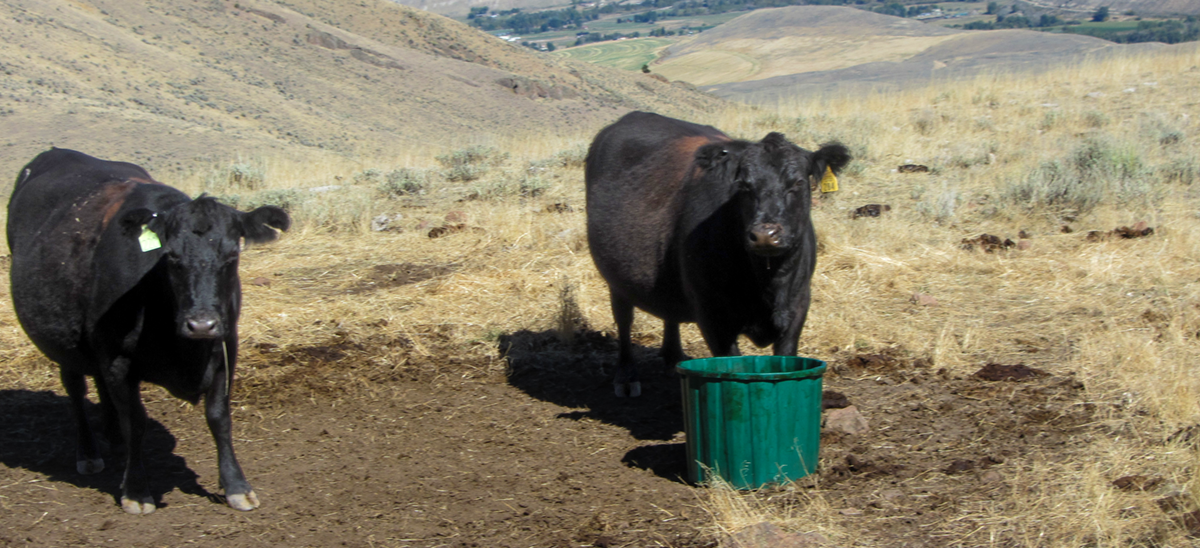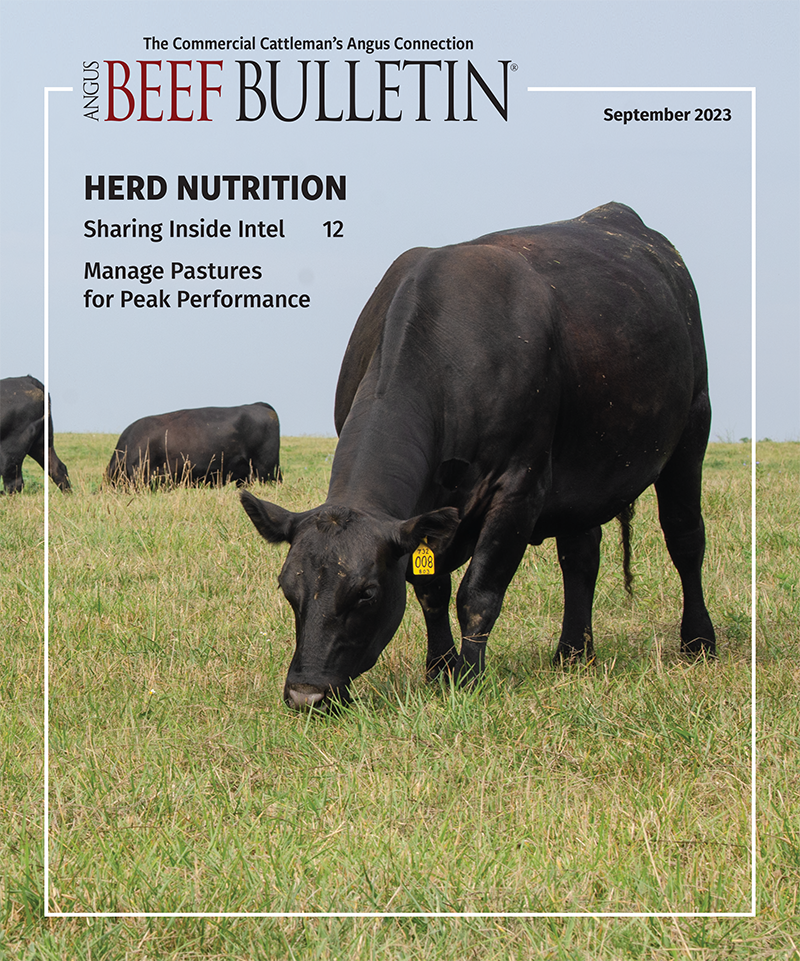
Protein Supplements for Mature, Dry Pastures
Tips for meeting protein requirements of cattle during fall and winter months.
During fall and winter, most forages are low in protein (unless fall rains have stimulated new growth). Yet, many stockmen try to extend grazing as long as possible since winter feeding is usually the most expensive part of raising cattle. Adding a little protein supplement to mature, dry pastures is generally cheaper than feeding hay.
An adequate protein level in ruminant diets is crucial for optimal microbial function. Rumen microbes are key to utilization of complex carbohydrates in dry, standing forage. Cattle may lose weight on dry fall pastures, at a time when they should be building reserves in preparation for winter and next spring’s calving. Without protein supplement on mature, dry pasture, the rumen cannot adequately digest low-quality forages.
The first thing that happens when a ruminant is short on protein is feed intake goes down. Cattle can’t eat enough forage to maintain themselves. A protein supplement feeds the microbes that break down feed components into the basic parts — sugars and amino acids — and then the animals build everything back for what they need. With adequate nitrogen (protein), the microbes multiply more, digest feed better and feedstuffs move through the digestive tract faster. The animal can then eat more, process more and get more benefit from it.
Ken Olson, Extension beef specialist for South Dakota State University, says the key number is 7% crude protein (CP).
“In general, the requirement for a cow, even a mid-gestation dry cow whose calf is weaned, is a little higher than that. But, we are meeting the requirement for rumen microbes, so they can digest the forage. That’s our first need, before we worry about the cow,” he says. If we meet the requirements of the rumen microbes, they will provide for maintenance requirements of the cow.
When the protein level in forage falls below 7%, it begins to limit microbial fermentation in the rumen. There aren’t enough microbes to get the job done. Digestion slows, food moves through slower and the cow can’t eat as much.
“Low digestibility reduces feed intake. The big question is: What’s the protein level in the forage the cattle are selecting? That question is nearly impossible to answer on pasture,” Olson says. “Cattle are selective grazers. If we clip a sample of forage, it is probably poorer in protein content than what they are eating. Our estimate is closer by observing what the cows are actually eating than by hand plucking a sample of plants.”
Many of the native cool-season grasses in western and northern states can be good fall and winter pasture just by themselves, without a protein supplement. They have more nutrients in their mature, dormant state than most tame grasses do. Some native forbs and shrubs (like winterfat/white sage) make good winter forage. Winterfat contains 10% CP.
“To know whether forages are protein-deficient, watch cow body condition and observe feces,” Olson advises. “You don’t need to send samples for analysis; just see how moist/fluid or dry the feces are. When cattle are on lush, green feed and manure is loose and liquid, this is a sign of excess protein.” The material is digested quickly and travels through the digestive tract too fast, with some waste of nutrients.
Firm/dry manure that makes a pile that stacks up is a sign of protein deficiency, says Olson. There is not enough protein to digest forage efficiently and keep things moving through at a proper pace. If the protein level is where it should be, manure will be moist and loose, but not liquid. Moisture content and consistency of feces is probably the best indicator of forage quality, along with body condition. If cattle start losing weight, they are probably protein-deficient.
Grazing management plays a role and can minimize the need for supplements.
“In the fall with good management, protein may be adequate for rumen microbes. As we go into winter, with forage in complete dormancy, we probably need supplement,” he says.
“It’s amazing how well cattle can do when you first put them into a new, ungrazed dormant pasture,” Olson observes. At first, they select a diet high enough in protein that they don’t need a protein supplement. However, the longer they stay in that pasture, the less protein they can find.
“The pasture is dormant (no regrowth), so every day the cattle are there, they are taking whatever is best of what’s left,” he explains. “As time goes on, protein content in remaining forage becomes less. Thus, grazing management (such as rotating to new pastures) can do a lot in terms of improving protein status of cattle, even on dormant pastures,” he says.
Editor’s note: Heather Smith Thomas is a freelance writer and cattlewoman from Salmon, Idaho.



